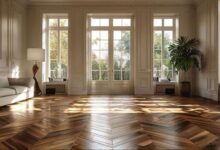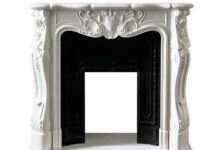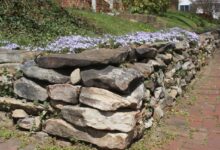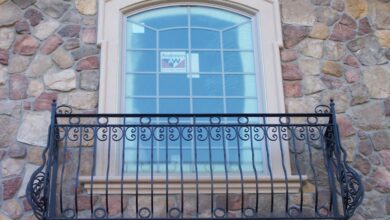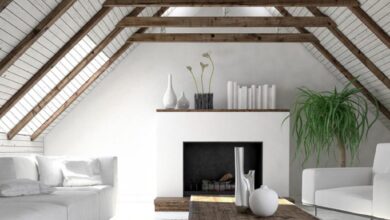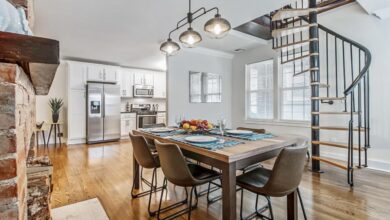Wooden Shutters A Comprehensive Guide
Wooden shutters: More than just window coverings, they’re a statement piece, adding character and charm to any home. From classic raised panel designs to sleek louvered styles, the options are vast, each offering unique aesthetic qualities and levels of light control. This guide delves into the world of wooden shutters, exploring their various types, manufacturing processes, installation methods, design considerations, maintenance tips, and cost factors, providing you with all the information you need to make an informed decision.
We’ll examine the differences between various wood types, their durability, and maintenance needs. We’ll also guide you through the installation process, covering both interior and exterior mounting techniques. Furthermore, you’ll discover how to incorporate shutters seamlessly into your home’s design, selecting the perfect style, color, and finish to complement your existing architecture. Finally, we’ll address common concerns regarding cost and maintenance, empowering you to make a choice that suits your budget and lifestyle.
Types of Wooden Shutters
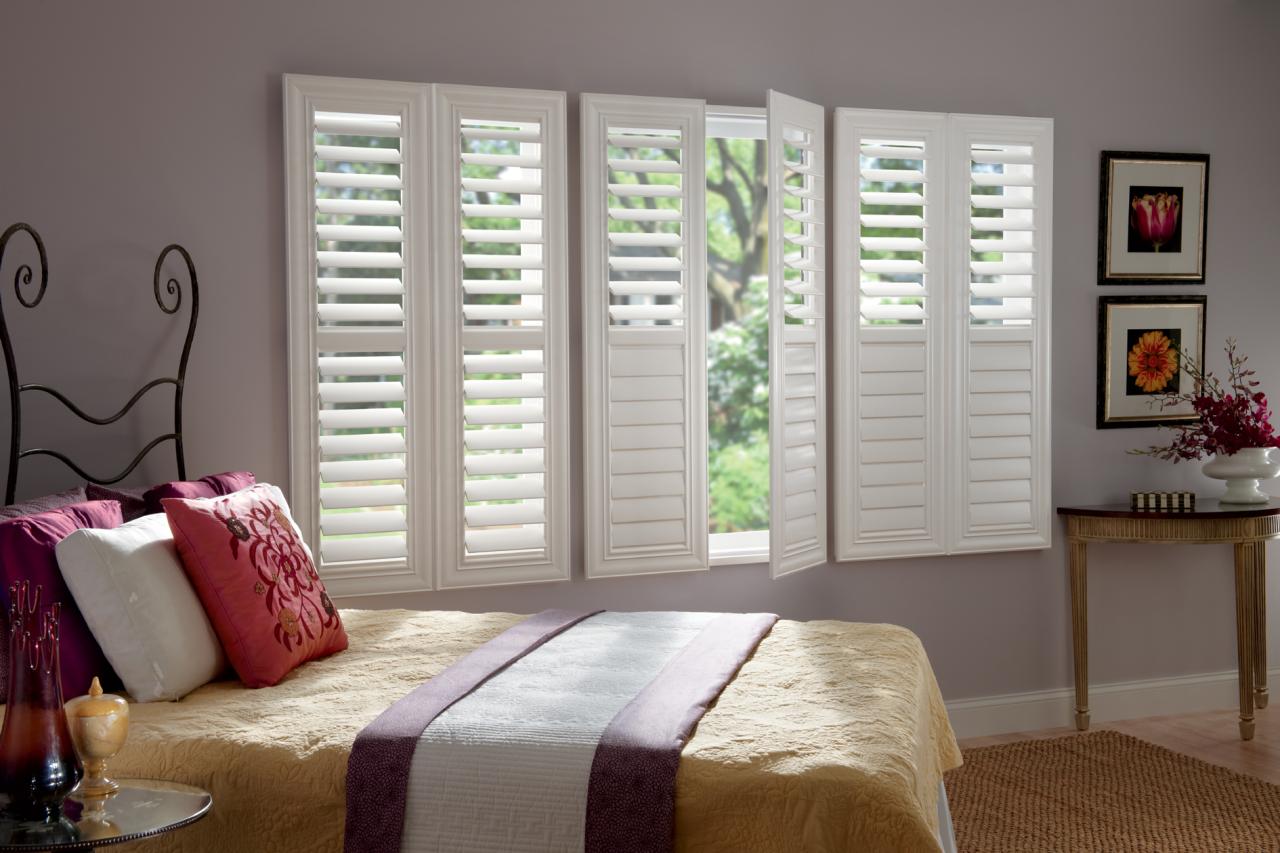
Source: co.za
Wooden shutters offer a timeless and versatile way to enhance the aesthetic appeal and functionality of your home. From classic designs to contemporary styles, the variety available allows for customization to suit any architectural style and personal preference. Understanding the different types and their characteristics is key to making an informed decision for your home.
Wooden Shutter Styles
Wooden shutters are available in several distinct styles, each with its own unique construction and visual impact. The most common styles include raised panel, louvered, and board and batten shutters. Raised panel shutters feature recessed panels, creating a three-dimensional effect and a more formal appearance. Louvered shutters, with their adjustable slats, provide excellent light control and ventilation. Board and batten shutters consist of wide vertical boards separated by narrower battens, offering a rustic and traditional look.
The choice depends largely on personal preference and the overall style of the house.
Wood Types and Their Properties
The type of wood used significantly impacts the durability, maintenance requirements, and overall cost of wooden shutters. Cedar is a popular choice due to its natural resistance to rot and insects, requiring minimal maintenance. Pine, a more affordable option, is readily available but may require more frequent maintenance and protective treatments. Mahogany, known for its rich color and exceptional durability, is a premium choice but comes with a higher price tag.
The longevity and ease of care vary greatly depending on the wood selection and the climate.
Comparison of Wooden Shutter Types
| Shutter Type | Material | Approximate Cost (per shutter) | Maintenance | Typical Lifespan (years) |
|---|---|---|---|---|
| Raised Panel | Cedar, Pine, Mahogany | $100 – $500+ | Periodic cleaning, occasional refinishing | 20-50+ |
| Louvered | Cedar, Pine, Basswood | $75 – $400+ | Regular cleaning, occasional lubrication of hinges | 15-40+ |
| Board and Batten | Pine, Fir, Redwood | $80 – $350+ | Periodic cleaning, occasional repainting or staining | 15-35+ |
| Bahama Shutters | Cedar, Cypress | $150 – $600+ | Similar to louvered shutters, but may require more frequent adjustment | 20-40+ |
Note: Prices are estimates and can vary significantly based on size, customization, and retailer. Lifespan can be affected by weather conditions and maintenance practices.
Manufacturing and Installation
Creating beautiful and functional wooden shutters involves a meticulous process, from carefully selecting the wood to the final installation. Understanding this process ensures you receive high-quality shutters that enhance your home’s aesthetic appeal and provide years of reliable service. This section details the manufacturing and installation steps, offering insights into the craftsmanship and techniques involved.
Wooden Shutter Manufacturing
The manufacturing of wooden shutters begins with the selection of high-quality wood. Common choices include basswood, poplar, and pine, each offering different properties in terms of durability, grain, and cost. After selection, the wood is carefully milled to the desired dimensions, ensuring accuracy and minimizing waste. The individual shutter panels are then shaped, typically using Computer Numerical Control (CNC) machinery for precision and repeatability.
Wooden shutters offer a classic and elegant look, enhancing any home’s curb appeal. The cost of installation, however, can vary widely, much like the fluctuating prices of fuel; checking a price comparison site like this one, Perbandingan harga BBM Pertamina Patra Niaga dengan kompetitor , helps you budget effectively. Ultimately, the right wooden shutters will depend on your budget and personal style.
This process creates the intricate louvers and frames that define the shutter’s style. Next, the panels undergo a thorough sanding process to achieve a smooth surface, preparing them for the finishing stages. Finally, a variety of finishes are applied, ranging from paint to stains, providing protection and enhancing the aesthetic appeal. The choice of finish depends on the desired look and the environmental conditions.
Shutter Installation Methods
There are three primary methods for installing wooden shutters: interior mount, exterior mount, and overlay. Interior mounting involves attaching the shutters directly to the window frame, inside the window recess. This method is ideal for windows with deep frames. Exterior mounting, on the other hand, involves attaching the shutters to the window casing, outside the window frame. This is suitable for shallower frames or when a more prominent shutter appearance is desired.
Overlay installation positions the shutters on top of the window casing, providing a clean, modern look. Each method offers distinct advantages and is chosen based on the specific window and design preferences.
Installing Louvered Wooden Shutters: A Step-by-Step Guide
This guide details the installation of louvered wooden shutters using the interior mount method. Remember to always prioritize safety and use appropriate personal protective equipment (PPE) such as safety glasses and gloves.
- Preparation: Begin by carefully measuring the window to ensure accurate shutter placement. Mark the mounting locations on the window frame using a pencil. Gather necessary tools: a drill, screwdriver, level, measuring tape, pencil, safety glasses, and gloves. Also, ensure you have the appropriate screws and mounting hardware provided with your shutters.
- Mounting the Shutter Frame: Holding the shutter frame against the marked locations, use a level to ensure it is perfectly aligned. Pre-drill pilot holes to prevent wood splitting, then carefully attach the frame to the window frame using the provided screws.
- Image Description: This step shows a close-up of a person using a level to ensure the shutter frame is perfectly aligned before screwing it into the window frame. The person is wearing safety glasses. The drill and screws are visible nearby.
- Securing the Shutter Panels: Once the frame is securely attached, carefully install the shutter panels into the frame. Most shutters use a simple hinge mechanism. Ensure the panels are aligned and close smoothly.
- Image Description: This image shows the shutter panels being carefully inserted into the pre-installed frame. The image highlights the smooth operation of the hinges and the precise alignment of the panels.
- Final Adjustments and Inspection: After installing all panels, inspect the installation for any misalignments or loose screws. Tighten any loose screws and make necessary adjustments. Test the operation of the louvers to ensure smooth movement.
- Image Description: This image depicts the final installed shutters, showing the smooth operation of the louvers and the precise alignment of the panels within the frame. The overall aesthetic appeal is evident.
Design and Aesthetics
Wooden shutters offer a unique opportunity to enhance the architectural style and aesthetic appeal of any home, significantly impacting its overall curb appeal and interior design. The versatility of wood allows for seamless integration into various design schemes, from classic traditional homes to modern minimalist spaces. The choice of wood type, color, and finish plays a crucial role in achieving the desired aesthetic.The impact of wooden shutters on a home’s style is substantial.
For example, dark stained shutters on a white colonial-style house create a striking contrast, emphasizing the home’s classic elegance. Conversely, light-colored, louvered shutters on a contemporary home with large windows contribute to a clean, minimalist look. Rustic homes often benefit from the warmth and texture of natural wood shutters, perhaps with a distressed finish to further enhance the aged look.
Shutter Color and Finish Effects
Paint colors and finishes significantly influence the appearance of wooden shutters and their harmony with the surrounding architecture. A dark, rich color like deep navy or charcoal can add drama and sophistication, while lighter shades like cream or white create a more airy and open feel. A glossy finish reflects light, giving shutters a more formal appearance, while a matte finish offers a more subdued and casual look.
Consider the exterior paint color of the house and the surrounding landscaping when selecting a shutter color. For instance, shutters in a complementary color to the house’s siding create a cohesive and visually appealing exterior. Conversely, using a contrasting color can draw attention to the windows and add visual interest. The finish can also echo other elements, such as the color of the front door or trim, creating a unified design.
Design Considerations for Shutter Selection
Choosing the right wooden shutters involves careful consideration of several key factors to ensure optimal functionality and aesthetic appeal.
Wooden shutters offer a classic look, adding charm to any home. Their versatility extends beyond windows, though; imagine using them to create a stylish privacy screen in your Garden (jardin) , perhaps framing a seating area or dividing different zones. This way, the aesthetic of your wooden shutters can seamlessly flow from your house into your outdoor space.
- Window Size and Proportion: The size and style of your windows dictate the appropriate size and style of shutters. Large windows might benefit from wider shutters, while smaller windows might look overwhelmed by overly large ones. The proportion of the shutter to the window should be balanced and aesthetically pleasing.
- Architectural Style: Different architectural styles lend themselves to different shutter designs. Traditional homes often suit raised panel shutters, while modern homes might prefer sleek, flat panel designs. Consider the overall architectural details of the home to select shutters that complement its existing features.
- Desired Level of Light Control: The type of louver or panel design influences the level of light control. Fully louvered shutters offer the most control, allowing for precise adjustment of light and privacy. Solid panel shutters offer more privacy but less light control. Consider your needs for light and privacy when choosing the shutter design. For example, south-facing windows might benefit from fully louvered shutters to control intense sunlight, while north-facing windows might only need solid panel shutters for privacy.
- Material and Finish: The type of wood and its finish significantly impact the overall look and durability of the shutters. Hardwoods like mahogany or cedar offer superior durability and weather resistance, but they may be more expensive. The finish should be chosen to complement the home’s exterior and withstand the local climate conditions. For example, a high-quality exterior paint or stain is essential for protection against moisture and UV damage.
Care and Maintenance: Wooden Shutters
Wooden shutters, while durable, require regular care to maintain their beauty and extend their lifespan. Neglecting maintenance can lead to damage from the elements, wear and tear, and a loss of their aesthetic appeal. This section details the proper cleaning, protection, and repair techniques to keep your shutters looking their best for years to come.
Wooden shutters offer a classic and versatile way to control light and privacy in any room. They can dramatically change the ambiance, especially in your Living room (salon) , adding a touch of rustic charm or sleek sophistication depending on the style you choose. Ultimately, the right wooden shutters can truly elevate the overall look and feel of your living space, providing both function and style.
Cleaning Wooden Shutters
Regular cleaning prevents dirt and grime buildup, which can dull the finish and damage the wood over time. For routine cleaning, a soft cloth dampened with mild soapy water is sufficient. Avoid harsh chemicals or abrasive cleaners, as these can strip the finish and scratch the wood. After washing, thoroughly dry the shutters with a clean, dry cloth to prevent water damage.
For more stubborn dirt, a soft-bristled brush can be used gently to loosen debris before wiping. Annual deeper cleaning may be necessary, depending on the environment.
Protecting Wooden Shutters from the Elements
Exposure to sunlight, rain, and extreme temperatures can cause fading, warping, and cracking. Regular application of a high-quality exterior-grade wood sealant or varnish is crucial. This creates a protective barrier against moisture and UV rays, preserving the wood’s integrity and color. The frequency of application depends on the sealant used and the climate; check the manufacturer’s instructions for guidance.
Consider installing awnings or other shading devices to minimize direct sun exposure, especially during peak hours. Regularly inspect the sealant for wear and tear and reapply as needed to maintain its effectiveness. In harsh climates, consider using a more weather-resistant sealant designed for extreme temperatures and moisture.
Wooden shutters offer a classic and stylish way to control light and privacy. They’re a perfect addition to any home, especially when you want to enhance the ambiance of your outdoor space, like a lovely Terrace (terrasse). Imagine enjoying a cool drink on your terrace, shielded from the sun by beautifully crafted wooden shutters. The shutters themselves can even become a design feature, adding character and charm to your home.
Repairing Minor Damage to Wooden Shutters
Minor scratches can often be buffed out with fine-grit sandpaper and then treated with a wood touch-up pen or stain to match the existing finish. For more significant scratches or cracks, wood filler can be used to repair the damage. Apply the filler according to the manufacturer’s instructions, ensuring it’s level with the surrounding wood. Once dry, sand the filler smooth and refinish the area with stain or sealant to match the rest of the shutter.
Wooden shutters offer a charming aesthetic, instantly enhancing a home’s curb appeal. Securing your dream French home, complete with those beautiful shutters, might require navigating the intricacies of a Mortgage in France , a process that can seem daunting at first. But once you’ve secured financing, you can fully focus on choosing the perfect wooden shutters to complement your new property.
Loose slats can often be tightened by re-securing the screws or using wood glue to reinforce the joint. If a slat is severely damaged, it may need to be replaced; consider consulting a professional for this type of repair. Always use appropriate safety equipment, such as safety glasses and gloves, when working with tools and materials.
Wooden shutters offer a classic and versatile way to control light and privacy in any room. For a truly restful atmosphere, consider installing them in your Bedroom (chambre) , where they can add a touch of elegance and help create a serene sleeping environment. The natural warmth of the wood complements many bedroom styles, making wooden shutters a worthwhile investment for your space.
Cost and Pricing Factors
The cost of wooden shutters is influenced by a variety of factors, making it crucial to understand these elements before making a purchase. Prices can vary significantly depending on the choices you make, ranging from budget-friendly options to high-end, bespoke installations. This section will break down the key cost drivers and provide a clearer picture of what you can expect to pay.
Factors Influencing Wooden Shutter Costs
Several key factors significantly impact the overall cost of wooden shutters. These include the type of wood used, the size and number of shutters needed, the level of customization desired, and the cost of professional installation. Higher-quality wood, larger dimensions, intricate designs, and professional installation all contribute to a higher final price.
Wooden shutters offer a classic and versatile way to control light and privacy. They’re a fantastic addition to any home, and look especially charming when installed on a Balcony (balcon) , adding a touch of elegance and enhancing the overall aesthetic. The shutters themselves can be customized to perfectly match your balcony’s style, creating a cohesive and visually appealing outdoor space.
Custom vs. Pre-made Shutters: A Cost Comparison
Custom-made wooden shutters offer unparalleled design flexibility and a perfect fit for your windows, but this comes at a premium. Pre-made shutters, while more affordable, may require compromises on size and style to fit your windows exactly. Typical pricing ranges for custom shutters start around $300-$500 per shutter panel, while pre-made options can begin at $100-$200 per panel, depending on size and material.
However, the cost of alterations to pre-made shutters to fit unusual window sizes can quickly negate these initial savings.
Estimated Cost of Wooden Shutters
The table below provides estimated cost ranges for wooden shutters based on various factors. These are average estimates and actual prices may vary depending on location, supplier, and specific design choices.
| Wood Type | Size (per panel) | Installation | Estimated Cost (per panel) |
|---|---|---|---|
| Pine | 24″ x 36″ | DIY | $100 – $150 |
| Pine | 24″ x 36″ | Professional | $150 – $250 |
| Basswood | 36″ x 48″ | DIY | $150 – $250 |
| Basswood | 36″ x 48″ | Professional | $250 – $400 |
| Mahogany | 48″ x 72″ | Professional | $400 – $700+ |
Final Review
Choosing the right wooden shutters can significantly enhance your home’s aesthetic appeal and functionality. From understanding the nuances of different styles and wood types to mastering the installation process and implementing effective maintenance strategies, this guide has provided a comprehensive overview. By considering factors like your home’s architectural style, desired level of light control, and budget, you can confidently select and install wooden shutters that perfectly complement your space, offering both beauty and lasting value.
Remember to prioritize quality materials and proper installation for long-term enjoyment.
FAQ Explained
What is the best wood type for outdoor shutters?
Cedar and redwood are excellent choices for outdoor shutters due to their natural resistance to rot and insects. However, proper sealing and regular maintenance are still crucial.
How often should I clean my wooden shutters?
Dusting regularly with a soft cloth or brush is recommended. A deeper clean with a damp cloth and mild soap should be done at least once or twice a year, depending on your environment.
Can I paint my wooden shutters myself?
Yes, you can. Proper preparation is key – sanding, priming, and applying multiple coats of high-quality exterior paint will ensure a long-lasting finish. Consider using a paint sprayer for a more even coat.
How long does it take to install wooden shutters?
Installation time varies greatly depending on the size and number of shutters, as well as your experience level. A simple installation could take a few hours, while more complex projects might take a full day or longer.
What are the warranty options for wooden shutters?
Warranty terms vary significantly by manufacturer. Always check the manufacturer’s warranty information before purchasing. Some offer warranties on materials and workmanship, while others may offer limited warranties.
